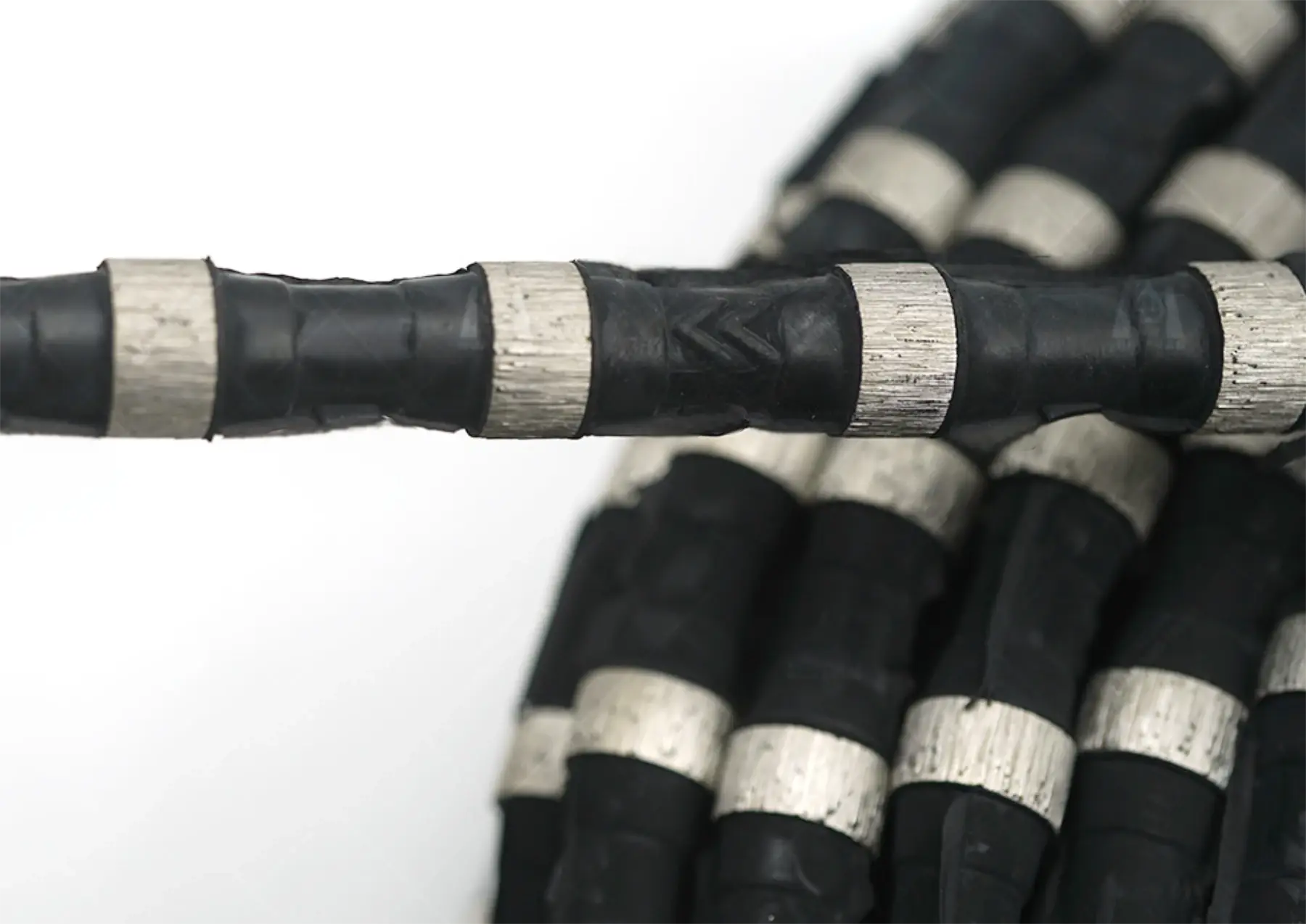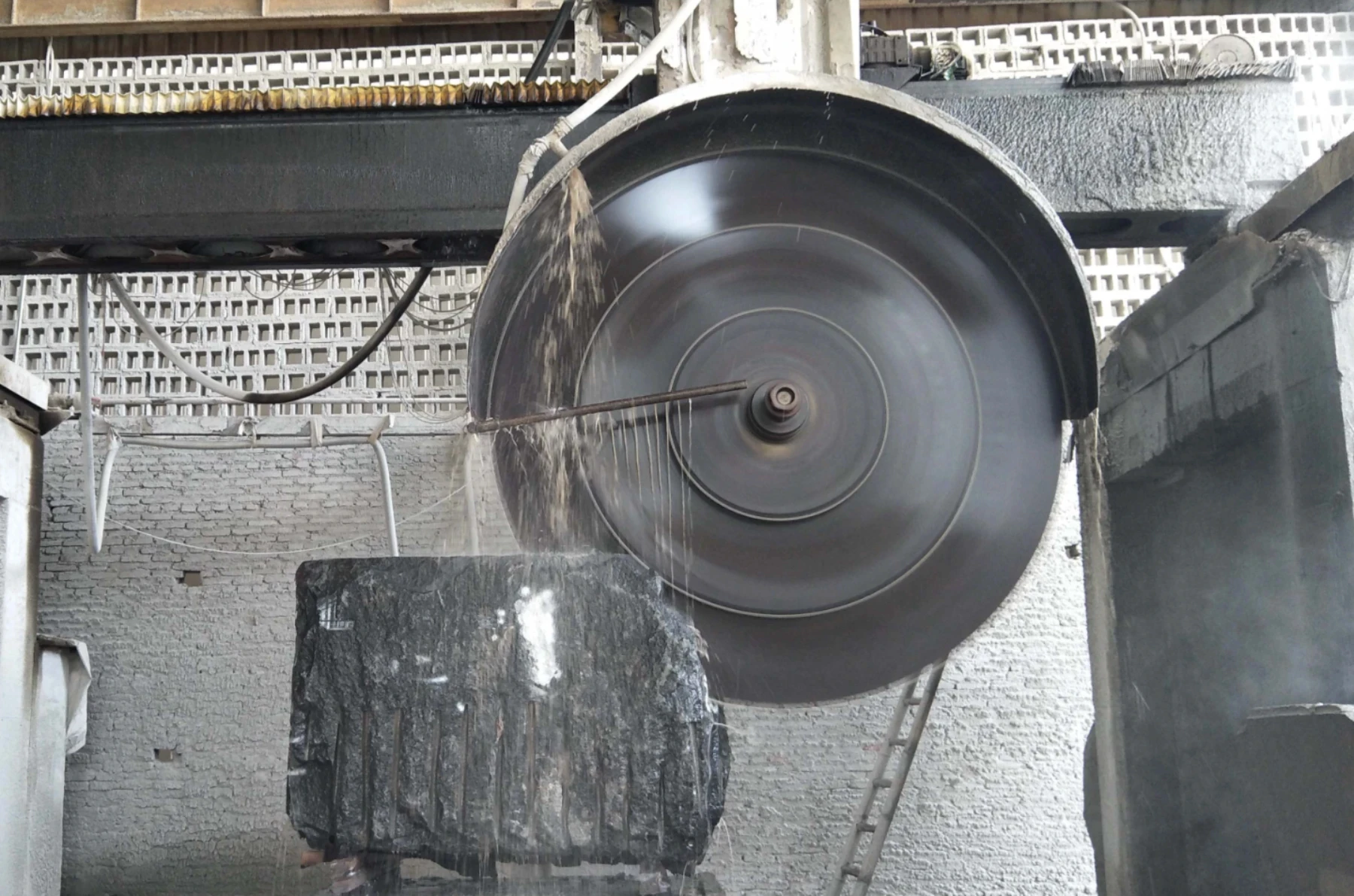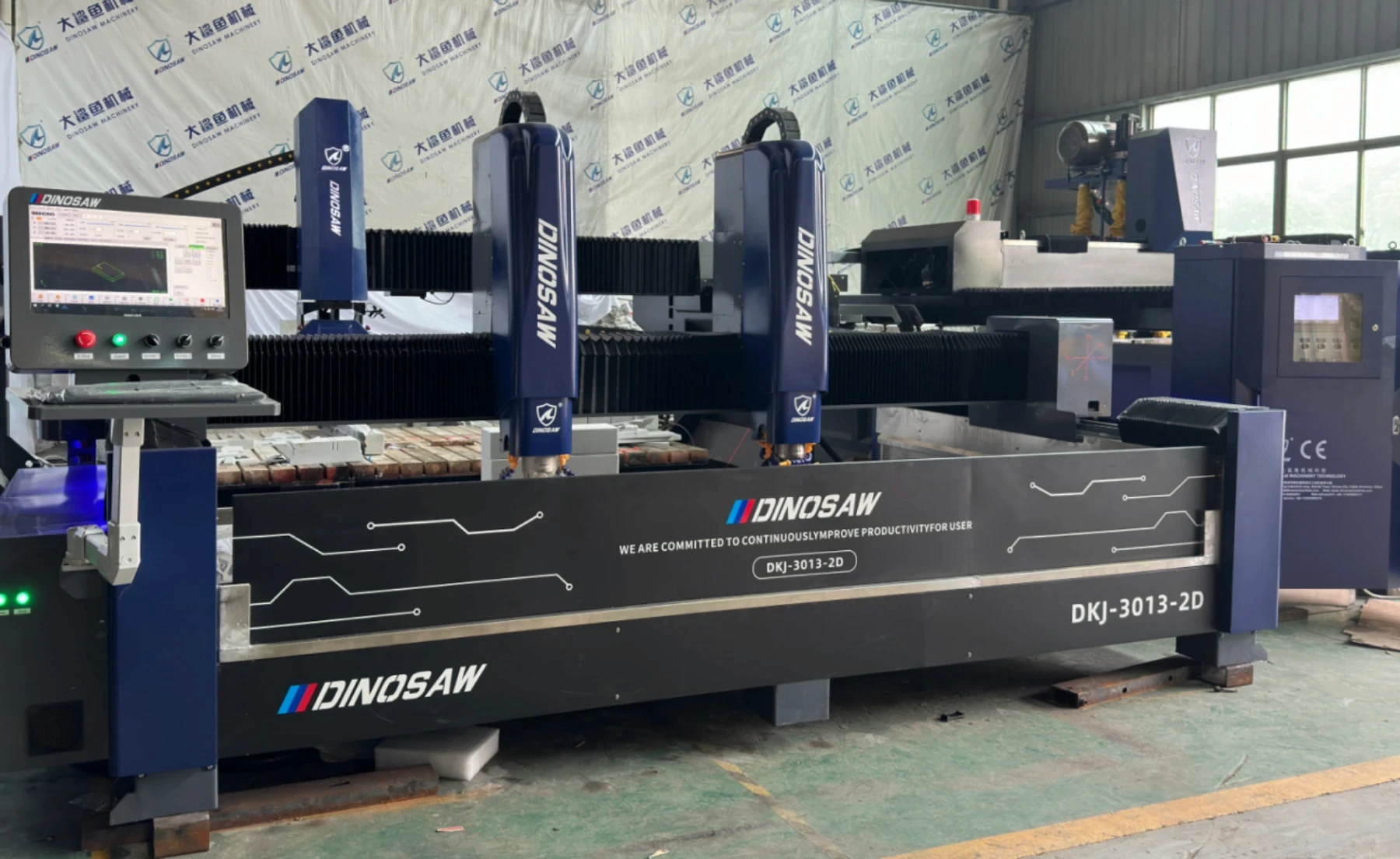
Edge chipping is costing fabricators thousands weekly. Rejected slabs, rework time, and frustrated customers add up fast.
Most shops blame their technique or equipment power. They're wrong.
The real culprit? Three specific material properties of sintered stone that standard diamond blades simply can't handle. Once you understand these properties, the solution becomes crystal clear...

The Three Hidden Enemies in Every Sintered Stone Slab
Let's examine what makes sintered stone so challenging to cut cleanly. The first enemy hiding in every slab is extreme hardness. We're talking Mohs 6-7 hardness from quartz and feldspar content. Standard bond matrices wear too fast, losing cutting efficiency within minutes.
🔨 Enemy #1: Extreme Hardness
However, hardness alone isn't the complete picture. The second property that destroys edges is glass-like brittleness. High-pressure sintering creates impact-sensitive structures that seem solid but fracture unpredictably. Wrong blade pressure instantly creates micro-fractures that propagate into chips.
⚡ Enemy #2: Glass-Like Brittleness
The third challenge compounds everything: ultra-dense matrix with ≤0.02% water absorption creates a non-porous surface. Heat builds up rapidly with standard diamond segments, causing thermal stress cracks. Each property alone is manageable. Combined? They create the perfect storm for edge failure. But here's what the top fabricators discovered...
🌊 Enemy #3: Ultra-Dense Matrix
The third challenge compounds everything: ultra-dense matrix with ≤0.02% water absorption creates a non-porous surface that traps heat like a thermal blanket. Unlike natural stone with its micro-porous structure that allows heat dissipation, sintered stone's glass-like density forces all cutting heat to concentrate at the blade-material interface.
This creates a dangerous thermal cascade. As friction generates heat, the ultra-dense matrix prevents natural cooling. Temperatures spike rapidly at the cutting edge, causing thermal expansion in both the blade segments and the sintered stone. When materials expand at different rates, stress fractures become inevitable.
Now imagine these three enemies working together: extreme hardness generates maximum friction, glass-like brittleness makes the material fracture-prone, and the ultra-dense matrix amplifies thermal stress. Each property alone is manageable. Combined? They create the perfect storm for edge failure.
But here's what the top fabricators discovered...

The Blade Technology That Changes Everything
Self-sharpening diamond bond matrix. That's the secret. While competitors struggle with the same old rigid bonds that dull quickly against sintered stone's hardness, smart fabricators have moved to self-sharpening bonds that continuously expose fresh diamond particles, maintaining consistent cutting performance.
The breakthrough? Copper and tin additives in the bond matrix. This precisely balances hardness with flexural strength, preventing both premature wear and catastrophic segment cracking. It's not just theory—the technical specifications prove the performance advantage.
The Breakthrough: Copper-Tin Enhanced Matrix
Technical Specification
Bond Composition: Enhanced diamond matrix with copper-tin alloy additions
Performance Target: 40% longer blade life, 60% reduction in edge chipping
Heat Management: Superior thermal conductivity prevents stress buildup
But does this actually work in real production environments? One fabricator put it to the ultimate test...
Industry Standards & Certification
These advanced cutting technologies align with international standards for stone processing equipment. The ISO 19432-1:2020 standard for portable cutting machines and Natural Stone Institute guidelines ensure optimal safety and performance.
Industry-leading manufacturers following Natural Stone Council certification standards have validated these copper-tin enhanced bond matrices through rigorous testing protocols certified by NSF International.

Why Equipment Stability Supports Blade Performance
Even the best blade needs stable support to deliver its full potential.The advanced self-sharpening diamond technology we discussed is the primary factor determining cutting capability and edge quality. However, equipment stability plays a crucial supporting role in helping that blade perform consistently.
While blade technology determines whether you can cut sintered stone effectively and what quality you'll achieve, equipment stability affects how smoothly that cutting process operates. Even minor vibrations can interfere with the blade's precision work on sintered stone's brittle structure.
Understanding the Equipment Support Hierarchy
Handheld cutters and angle grinders present the greatest stability challenges. Human hand tremor, operator fatigue, and lightweight construction create micro-vibrations during cutting. However, with the right self-sharpening blade technology, skilled operators can still achieve excellent results.
Industrial manual stone cutters provide improved stability through fixed mounting and heavier construction. This dampens vibration and allows the advanced blade technology to work more consistently, though operator technique still influences results.
CNC bridge saws with cast beams and reinforced side beams offer optimal stability support. The heavy cast iron construction and computer-controlled feed rates create ideal conditions for the blade technology to perform at its maximum potential.
Equipment Impact on Blade Performance
Handheld Equipment:Requires skilled technique but achieves excellent results with proper blade technology
Manual Stone Cutters:Improved consistency, reduced operator fatigue, enhanced blade performance
CNC Bridge Saws:Maximum stability allows blade technology to deliver peak performance
The key insight: blade technology determines your cutting capability and quality potential, while equipment provides the stability platform for that blade to perform. When superior blade technology meets adequate stability, the results become transformational...

Real-World Cutting Performance Proof
Live Test Results: 115mm Diamond Blade for sintered stone slab on Handheld Angle Grinder
Equipment Used:Standard handheld angle grinder
Material:800mm × 15mm sintered stone slab
Cutting Time:60 seconds
Operation:Smooth hand-guided feed rate
Heat Generation:Zero sparks observed
Result: Perfect edge finish achieved with handheld operation- No chipping, no secondary finishing required, demonstrating that advanced blade technology can deliver excellent results even with basic equipment when proper technique is applied.
Translation: This fabricator eliminated rework, reduced blade costs by 40%, and increased throughput by 25%. The ROI? Complete payback in 3 weeks.
While competitors struggle with edge quality issues, early adopters are capturing premium projects and building reputation advantages that will last for years...
Ready to Eliminate Edge Chipping Forever?
Don't let your competitors gain the edge quality advantage. The fabricators implementing this technology now will dominate their markets.
🏆 Industry Certification Support
Compliant with ISO Standards |CE Certified
🎯 Get Custom Specifications
Blade recommendations for your specific sintered stone applications
📊 See Live Demo
Watch the cutting performance difference in your facility
💰 Calculate ROI
Get personalized cost-savings analysis for your operation
Limited Time: First 50 inquiries receive complimentary blade performance analysis
Join the fabricators who've already eliminated their edge chipping problems. Contact DINOSAW technical team today.












